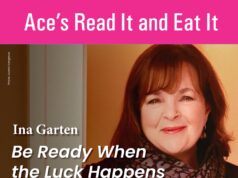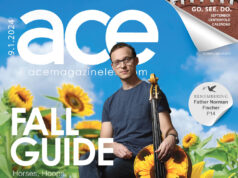Advocating for Lexington to be the best arts community it can be has meant that Ace has — occasionally, over the course of 21 years — had a stern word or two for some of Lexington’s most cherished arts institutions.
Here’s an excerpt from the August 17, 2000 issue of Ace:
“WhichKraft! Is the Woodland Arts Fair back on track?”
by Rob Bricken
[August 17, 2000]
“It’s not that we hate cornshuck dolls, though we do.
Cornshuck dolls have their place in society. It’s just that the place should not be the annual apex of outdoor art events in Lexington – namely the Woodland Arts Fair.
Common complaints from prior years included: lack of diversity (booth after booth of similarly shaped and styled ceramics); lack of new material (same artists, same art, year after year); and the presence of too many ‘kountry krafts’ (corncob people, mass-produced ‘authentic rural art’). These three things seem to be challenging the Fair’s basic premise, which is to bring diversity and quality to the art-consuming public.
Looking at last year’s Fair, one might be tempted to hang a genuine kountry ‘Bless this Mess’ sign on the lot.
But steps have been taken to change all that. A committee was formed last year to handle the operation of the WAF, headed by Don Ament. He says, ‘One of our goals was to [attract] a broader pool of higher quality artists.’ (Ament denies the presence of cornshuck dolls).
Faced with the problem of purifying the fair, in 1999 the WAF committee changed the system.
By concentrating on having higher quality arts and fine craft, the WAF committee is taking a calculated risk.
While the Fair wants to be a bastion of fine art and craft – if for every person who buys a $800 oil painting of a Flemish landscape there are a dozen rubes who drove 100 miles for a bushel of potpourri and a squadron of cornshuck people for their little cornshuck villages (whose cornshuck houses may be more tastefully decorated) – the Fair may have to backpedal…
What the committee didn’t get to implement to full effect last year has occurred for 2000, the twenty-fifth anniversary of the WAF. But even based on the changes made in last year’s show, the WAF has been nominated one of the top 200 art fairs in the nation by Sunshine Magazine, and a voting panel of national artists. There’s no reason that this year’s event shouldn’t show a marked improvement.
But if you see a cornshuck doll, let us know. We have matches.“ [–Ace, August 2000]
—-
…And Now…. Ten Years Later?
Flashing forward to 2010, and the 35th annual WAF last weekend? It’s come a long way, and the “marked improvements” forecast a decade ago are in place. Many of the changes implemented in 1999 are still paying off today.
According to the Art League, the Fair is now “Lexington’s largest free outdoor cultural event with over 65,000 visitors and 200 juried artists,” supporting LAL’s vision “of making visual art the lens through which central Kentucky distinguishes itself as a progressive, inclusive and vibrant region.”
This year’s jurors brought a practiced, discerning eye to the festival: Craig Kittner; Reba Rye (KSU associate art professor and artist); and Legacy Trail project manager and artist Kate Sprengnether.
 |
| Lexington artist John Lackey (homegrown press) |
Standout artists this year (among many) included Lexington artist John Lackey; sculptor Rod Lindauer; and the 2D mixed media award winner, Jessica Stoddart.
There wasn’t a cornshuck doll in sight.
 |
| Some things never change….Like… |
 |
| Possibly the same oil from the 1999 funnelcakes. (Mmmm!) |






